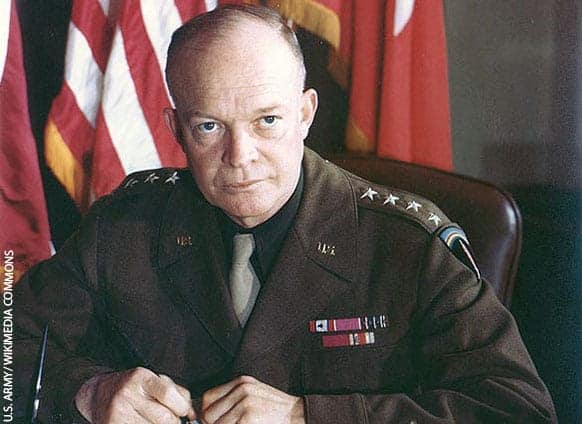Request Check Your Shocks


There it is, the finish line. You can see it right from where you’re standing. It looks good. In fact, it looks like relief! You envision yourself crossing it, with all the preparation, hard work, and maximum effort behind you. Isn’t that a sweet feeling? That’s the feeling of achievement.
Whether we prefer to do it in the public eye or not, achievement is one of mankind’s most sought after goals. So why, in a world where we have all the tools at our fingertips and the sky is the limit, do we procrastinate so frequently? Seriously, what’s the hold up?
If you can find enough humility to admit that fear is behind your procrastination, then keep reading. You might try to argue that you’re backed up because you are overwhelmed, too swamped with big projects, and drowning in household chores on top of it all. Regardless of which came first—the procrastination or the overwhelm—I guarantee you that fear is at the heart of it all.
In this blog, we’re going to take a gander at procrastination versus planning, indicators of each, and how to overcome this most insidious adversary of progress. Let’s take a look.
It’s the night before your report is due. The sales team is anxiously awaiting what you’ve prepared so they can move forward the following day. All eyes are on you. This is your big moment, but you haven’t got the foggiest idea of what you’re going to prepare for them.
Since this report is important to so many, possibly determining the future trajectory of your company, why do you think you’ve waited until the last minute to do anything about it? That doesn’t seem logical, does it? Logic would suggest that you’d start looking at it early in the game; the earlier the better, in fact.
As the deadline draws closer, the guilt and fear starts to wash over you. To compensate, your ego pipes up (this can’t be good), arguing that you waited so long to begin your report because you’ve been mentally planning this whole time…yeah, that’s it!
You were thinking about it each and every day, mentally organizing what needs to go where and why. You were contemplating where to source your material and data, the format you want to use, and all the other tiny details that would make your report stand head and shoulders above the rest.
This is diligence, right? How else could you appear to be so irresponsible, waiting until the last minute to complete something of this magnitude?
Let me tell you, your ego is not helpful if you believe this line of b.s. it’s feeding you.
Now is the time to be both more gentle with yourself and to be a little bit more stern. Let me explain.
You have to be honest and compassionate, admitting that you weren’t actually planning; you were procrastinating due to fear. If you had been planning, you would likely have finished the project by now, and there would be no feelings of overwhelm or guilt. In fact, if you’d actually been planning, you’d feel confident and ready to knock’ em dead with your presentation.
Procrastination is the face of fearful delay. You are afraid to move forward. Now, the reasons for this fear are many, including fear of success, fear of failure, imposter syndrome, overwhelm, and more. And while it’s important to get to the root of your fear, for our purposes today the flavor of the fear doesn’t matter so much as how it stops you from acting; namely, acting in the direction of progress.
When you plan, you’re actually engaging in the opposite of procrastination. You’re setting achievable deadlines for yourself, making a mental map of how you’re going to approach and bring your goal to fruition and in what timeframe. That’s not procrastination. That’s plotting progress.
Real planning overrides fear. It results in thoughtful, productive organization without the sense of overwhelm and fear associated with procrastination. Indeed, no matter how similar your clever ego might convince you it is, planning and procrastination are definitely at opposite ends of the spectrum.
In addition to a tangible lack of progress, procrastination has other symptoms or indicators that accompany it.
Any symptoms that go along with anxiety can also manifest with procrastination: a strong sense of dread, denial, heart palpitations or racing heart, chest pain, dry mouth, headache, racing thoughts, excessive sweating, shortness of breath, etcetera.
Any or all of these symptoms can emerge at different times along the procrastination path, but they all point to one thing that’s behind procrastination itself: fear.
Fear doesn’t discriminate. It’s happy to show up at any time, even with conflicting messages. Just like the above: What if I fail? My boss will lose confidence in me. But what if I succeed? My boss will give me even more work and expect perfection every time. Those two appear to be in conflict with one another, but fear has tainted them both. Why? Because fear is not rational. It cannot be trusted to tell you the truth about anything when it comes to achieving your goals.
Procrastination is the result of listening to fear whisper in your ear: You can’t, you shouldn’t, not yet, wait until tomorrow, you’ll be ready later, just one more week, one more day, one more hour, minute…etc. The general message is that you will have better ideas, be more prepared, or more suited for success at some other time.
Isn’t it the responsible thing to do to wait until you are in a better place to get the job done? That’s just common sense, it might seem. And so on and so forth go the ego and fear, dancing their devilish routine that stops you from achieving your best, day after day.
It’s a clever evil, procrastination, because it so often wears the mask of prudence, responsibility, and due diligence. But remember what I said before; true planning is the action opposite of procrastination. Planning is the action we actually engage in when we are being prudent, responsible, and committed to due diligence.
So don’t be fooled by a mind that tells you that the duration of your delay was due to planning when, in fact, you were actively procrastinating.
Overcoming procrastination can look different depending on your level of resistance to progress. It might include something like having an accountability buddy help make sure you create a timeline and stick to it. Or, in tougher cases, it may even involve some kind of therapy where you unravel and look at the fear that’s paralyzing you. You could put support groups into this category too, making sure that you understand you have the support to move forward and achieve your best.
Some things you can do on your own to overcome procrastination include:
Mindfulness: Learning how to incorporate a mindfulness practice can be tremendously helpful here. It helps keep you in the moment, so you aren’t as worried about what lies down the road. You are consciously focused on what you can do right now, leaving the future to worry about itself. Eventually, you cultivate enough action in the present moment that you reach your goal or complete your achievement without even realizing it. All those steps add up to a completed objective, which sure is nice.
Meditation: A cousin to mindfulness, with meditation you learn to stay with the distress, sit with the fear, and still act despite it. Meditation can include things like facing your fear; or, you could go the sports psychology route where you visualize yourself achieving your goal. You envision each step of the process along the way and the final result you desire. You try to feel how you will feel at each juncture, and then bring it to life.
Professional Development: You might even educate yourself about how professionals plan, determining how what they do can be applied to your personal style. Since planning is an antidote to procrastination, it’s important for you to become very familiar with it. You have got to give yourself a chance, and planning is the very means by which you can.
Planning is the thoughtful coordination of any number of aspects that, when achieved individually, help you reach a goal. Sometimes the goal will be tangible, and other times it will not. The planning process, however, will look relatively the same regardless of the tangibility of your desired result.
Effective planning looks like breaking down your goal into smaller, measurable milestones that can be reached as you take each step individually toward your objective.
Early steps can be as easy as gathering materials, calling resources, researching, or making a list of ideas. Planning is planning, and if you need to offer yourself some grace at the beginning of the process by making the tasks smaller or simpler, by all means, do it.
Early planning should also include some kind of timeline. This timeline helps you stay on track and effectively manage your time and commitment to your project. Sure, it’s nice when we can sit down and get something done in one fell swoop, but in today’s world of nonstop notifications, full calendars, and a tendency to overcommit, it’s a rare occurrence.
Understanding the foundational aspects of effective planning sets the stage for executing tasks with purpose and clarity.
As you break down your goals into manageable steps and create a timeline to guide your progress, you lay a solid groundwork for success. However, the key challenge lies in striking a balance between meticulous planning and taking decisive action to meet your goals.
Let’s look briefly at the delicate interplay between planning and action to optimize productivity and overcome the procrastination trap.
While planning is crucial for progress, balancing it with action is equally important. Without action, even the best plan remains theoretical; while acting without a plan can lead to inefficiency and wasted resources.
To find the right balance, set clear objectives and break them into actionable steps, creating a flexible roadmap. Plans should guide you, not constrain you. Avoid over-planning, as perfectionism can lead right back to procrastination. Accept that not everything can be controlled and be ready to adapt.
Regularly assess your progress and adjust as needed. Action creates momentum and offers insights that can refine your plan. Finally, hold yourself accountable by setting deadlines, establishing milestones, and tracking your progress. By balancing planning and action, you can avoid overthinking and achieve meaningful results.
In the quest to overcome procrastination and achieve your goals, effective planning and decisive action are indispensable allies.
By embracing a balanced approach that leverages the power of thoughtful planning while propelling you into action, you can navigate the complexities of productivity with confidence.
As you apply these principles in your endeavors, may you find the courage to move forward, the resilience to adapt, and the perseverance to turn aspirations into concrete achievements.
I’ll see you at the top!
Are you ready to face fear head-on? Join our exclusive list for details on Turn Your Fear Into Fuel, my upcoming new book that aims to empower leaders like you to conquer your fears and unleash your true potential.

I’ve been talking about fear for more than twenty-five years—on stages, in boardrooms, and across kitchen tables with people who were searching for a way forward. The phrase “turn your fear into fuel” has been in my vocabulary for decades. But for one reason or...

No matter how prepared you think you are, the unknown will always find a way to slip into the equation. It’s inevitable. The true mark of a leader isn’t the ability to avoid uncertainty and fear—it’s the ability to confront it, adapt to it, and use it as a springboard...

A Monumental Day to Celebrate Today marks the 15th anniversary of Primerica’s IPO—a day that will forever be etched in my memory. April 1, 2010, was not just a milestone for the company but a testament to resilience, perseverance, and the power of pushing through...

Originally Published Aug 2016 History tells our past and guides our future, but only if we assess it with honesty. Several years ago, my wife, Loveanne, and I went on a trip to Europe. Those who don’t know me will soon find out that I am quite the history buff. Part...

“The scarcest resource in the world is not oil, it’s leadership.”
As Co-CEO of the largest independent financal services company in North America, John Addison’s skill as a leader was tested and honed daily. He retired in 2015 after taking the company and it’s people to massive heights. He’s just not done helping people get to the top. Today, he’s at the helm of Addison Leadership Group, INC working daily to mentor and educate new leaders.

0 Comments